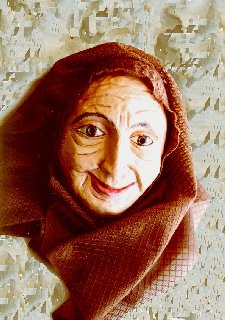

Mi-Carême masks and costumes
were once made from any old scrap the early settlers could lay
their hands on, such as a sleeve from an old shirt, cardboard or
even animal fur. However, today the masks are mostly bought in
stores or rented for the evening from local businesses who rent
costumes along with a mask during Mi-Carême week. 
Over the past two years, Acadian artists and craft persons, from the villages of St Joseph-du-Moine and Chéticamp, on the west coast of Cape Breton, have revived the custom of mask-making using a wide variety of both modern and traditional materials and techniques. Today one can see masks of Elmo, la Sagouine, Évangeline and many others. Among the most popular is the one called "Le Moine" or "The Friar", a tribute to the rock that was a landmark for the local fishermen until it slipped into the sea.
These masks have been displayed in galleries and art shows at various locations in Nova Scotia and at the "One of a Kind Show" in Toronto. Collectors have come from as far as Louisiana to view the creation of the artists.
Acadie Masques, a non-profit organization has been formed to promote Acadian culture beyond Atlantic Canada. The artists invite you to visit their studio located in the Centre LeMoine at St Joseph-du-Moine.
Here are some examples of other masks: